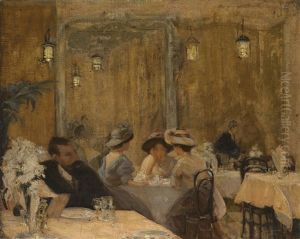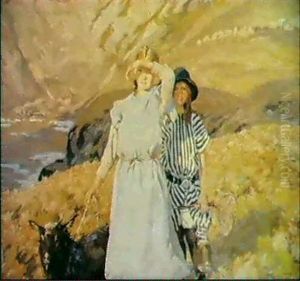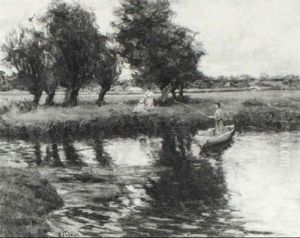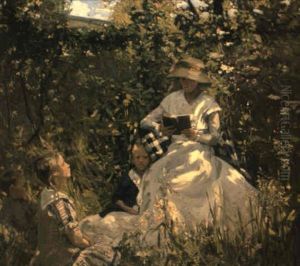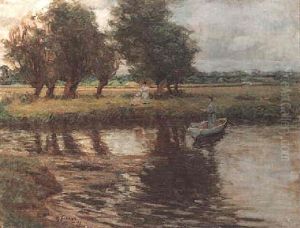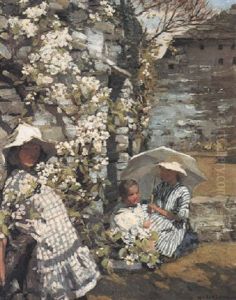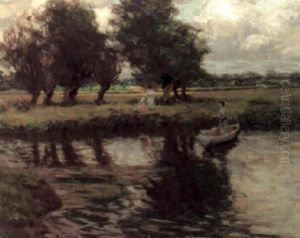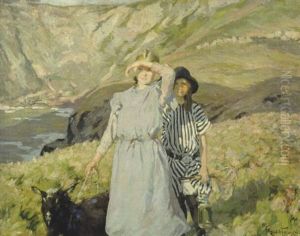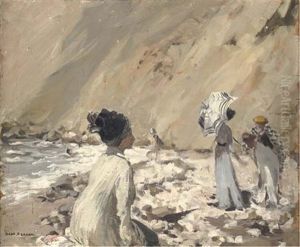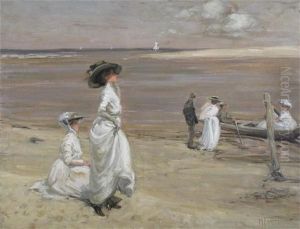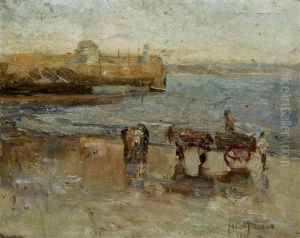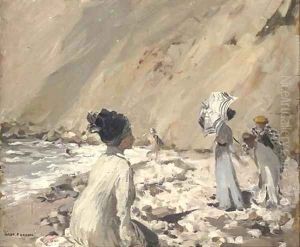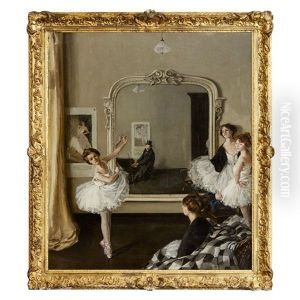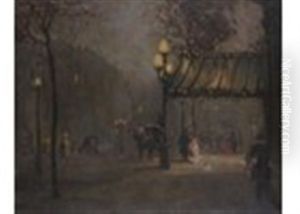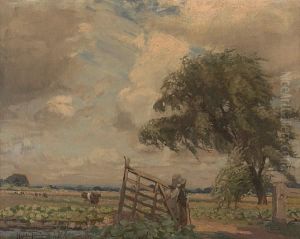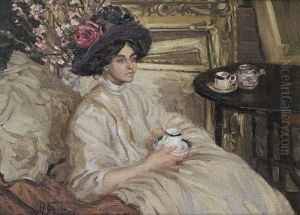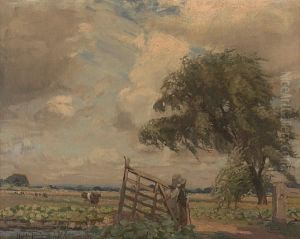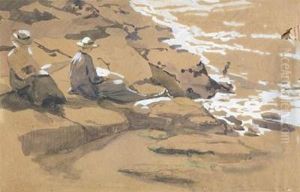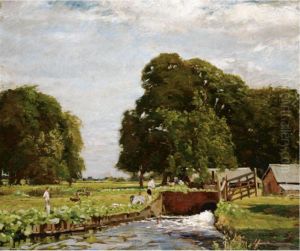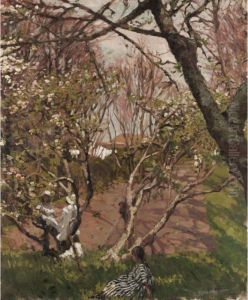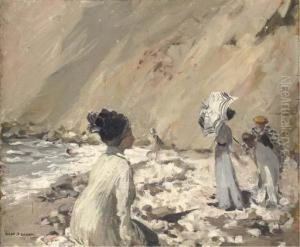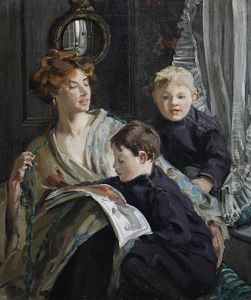Hilda Fearon Paintings
Hilda Fearon was an English Impressionist painter born in Kenley, Surrey in 1878. She is recognized for her landscapes, portraits, and figure studies, often painted en plein air, embracing the Impressionist technique of capturing the effects of light and atmosphere. Fearon studied under Hubert von Herkomer at his art school in Bushey, Hertfordshire, a place that attracted many artists and became a significant centre for the development of British Impressionism.
Her career was relatively brief but distinguished. Fearon exhibited her works at prestigious venues such as the Royal Academy and the Society of Women Artists. She was also a member of the Society of British Artists and the Royal Institute of Oil Painters. Her works were well-received, noted for their vivacious brushwork, sensitivity to color, and the ability to convey the mood of the scenes she depicted.
Tragically, Hilda Fearon's life was cut short by the 1918 influenza pandemic; she died in 1917 before the main outbreak, at the age of 39. Despite her early death, Fearon left behind a legacy of artwork that contributes to the narrative of British Impressionism. Her works are held in several collections, and her contribution to the art world, while not as widely recognized as some of her contemporaries, remains appreciated by art historians and collectors who value the Impressionist movement in Britain.
